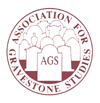An elderly relative died this past Monday; the funeral was yesterday. In most ways, it was a pretty typical event. The decedent was quite old, she'd been in declining health for a number of years, and her demise was not unexpected. People were understandably sad, tears were shed, and life goes on. The funeral itself was what one would expect -- the minister talked about the wonderful characteristics of the decedent (a woman he had met one time, and then only briefly) while those of us in the pews did our own mental editing/reality check. (If the dearly departed were even half as wonderful as eulogies always make the deceased sound, it would be a lot harder to let go.) The only surprising thing was that the church was not as full as I had thought it would be given how active the woman had been in the community in her younger days, but then I realized that the decedent had simply managed to outlive most of her contemporaries.
Visitation at the funeral home the night before held a few surprises, though. I've always been intrigued about customs and practices surrounding death, the various attitudes and rituals and their evolution over time. Americans have always struck me as being a tad squeamish about the subject. After all, the culture has abdicated personal responsibility by allowing professional funeral directors to take over what were once intimate family tasks: preparing the body for burial, for example, and digging the grave. For centuries, too, western culture has isolated the dead from the living: unlike some cultures where the bones of revered ancestors become part of the household (e.g., skulls up on the ceiling beams or bones buried in the floor), western European societies planted the dead in graveyards. That's changed a little with the advent of cremation -- during the 20th century it became acceptable, if not widely common, to have the cremains of a loved one residing in a tasteful urn on the credenza in the living room.
I've got to admire the funeral industry for managing to take that tasteful urn and move it to a whole new level. While sitting around sipping coffee at the funeral home, I realized I'd inadvertently wandered into the world's creepiest gift shop. The built-in bookcases and various other surfaces were full of display models of different items grieving families can purchase. You can now get individual urns:
Instead of the deceased's ashes residing in one large urn for all eternity, you can divide him or her among the family members. Personally, I find this a little creepy, but I know not everyone feels that way -- my older grandson was the recipient of such an urn after his other grandmother died a few years ago, and he seems quite happy to have it.
Individual urns not quite your thing? Or there are so many family members (and the decedent was a frail little thing who's not going to provide much ash to work with) that even the small urns are too large? How about some cremation jewelry? You can have ashes compressed into fake diamonds, or you can go for something a little less intense, like a heart you can wear as a necklace or on a charm bracelet:
What about the men, you ask? After all, guys aren't likely to want to wear a heart-shaped pendant no matter how much they loved their mother. Got them covered. Keychains, with a wide variety of designs to pick from:
I can see it now -- "I'll take the one with the gecko on it. Mom always loved those GEICO ads."
The options for stuff you can do with cremains don't stop with urns and jewelry, of course. You can take those ashes and have them made into stained glass. You can buy various pieces of innocuous looking household items that have compartments for cremains: desk lamps, for example. You can get urns that look like bookends (and can be used the same way) if you want to be subtle, or you can get urns that look like miniature caskets or sarcophagi if you want the urn to be a blatant piece of memento mori.
But what about families who don't opt for cremation? Aren't they kind of S.O.L. when it comes to death memorabilia? Not really. There are now these nifty little pieces of jewelry, which get sold by companies such as Thumbies:
You can have your loved one's fingerprints permanently embedded in a piece of (not cheap) jewelry that you can treasure forever. Holy crap. First they guilt you into the Cadillac casket, and then they swing into full up-sell mode by peddling tchotchkes to help guarantee that whatever estate the decedent had is thoroughly eviscerated. I'd love to hear the sales pitch for this stuff. What can they possibly say? Your mother's last wish was to be fingerprinted? She never had a chance to do one of those plaster-of-paris wall plaques in kindergarten; here's your opportunity to make it up to her?
Bottom line: prearrangements are looking better and better. Signing up with a burial society, making damn sure everyone knows the one and only thing I want is the absolute cheapest cremation done as quickly as possible, ashes in a milk carton or coffee can because they're going to get scattered, and no money whatsoever being spent in the world's creepiest gift shop.
[cross posted at All the Good Names Were Taken]
Talk 20 Slides 16-20
9 years ago






















